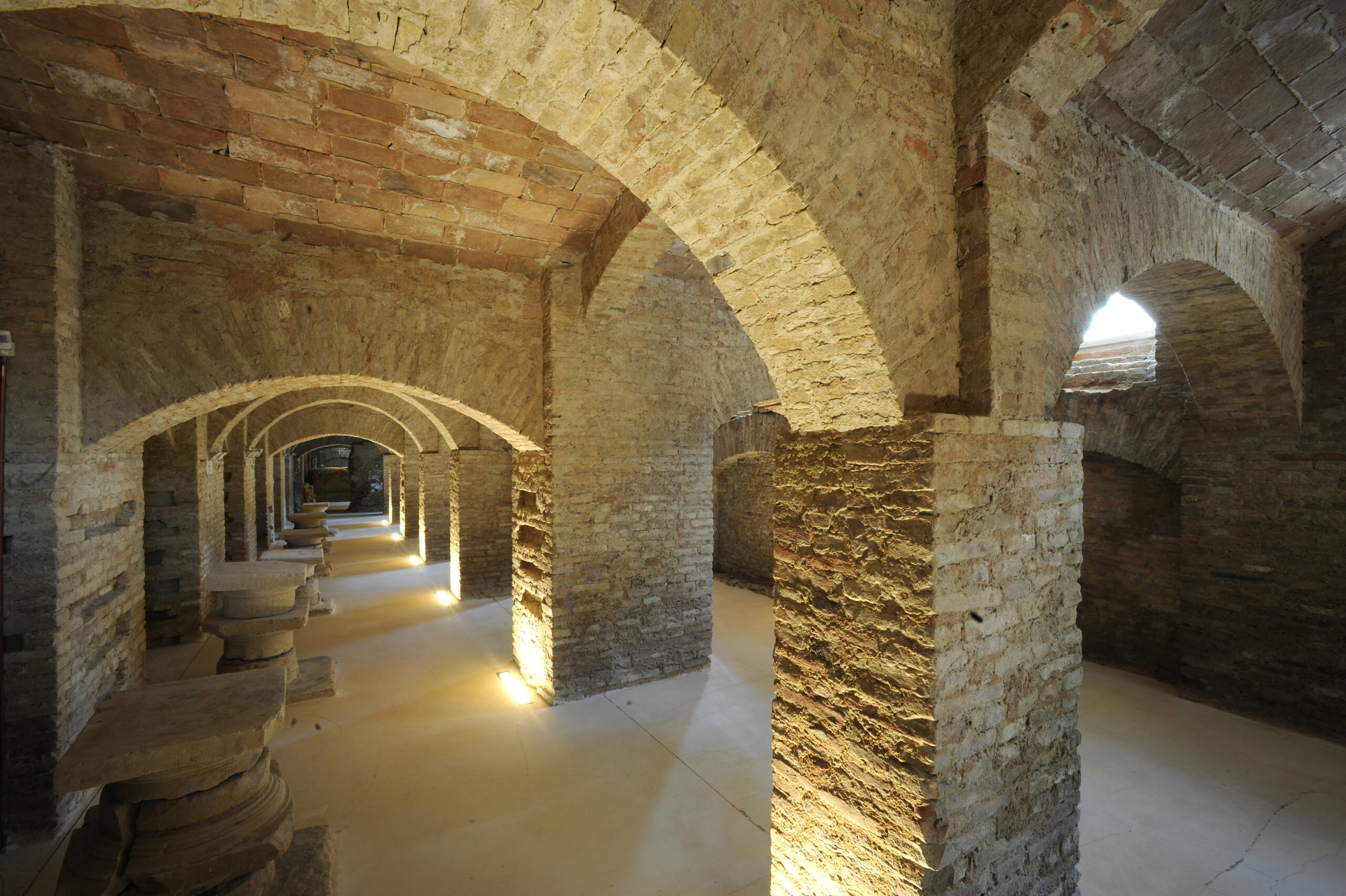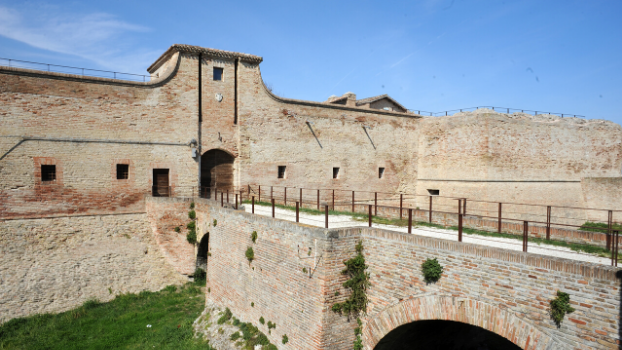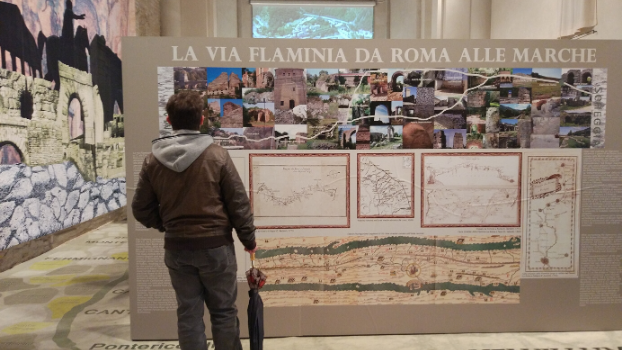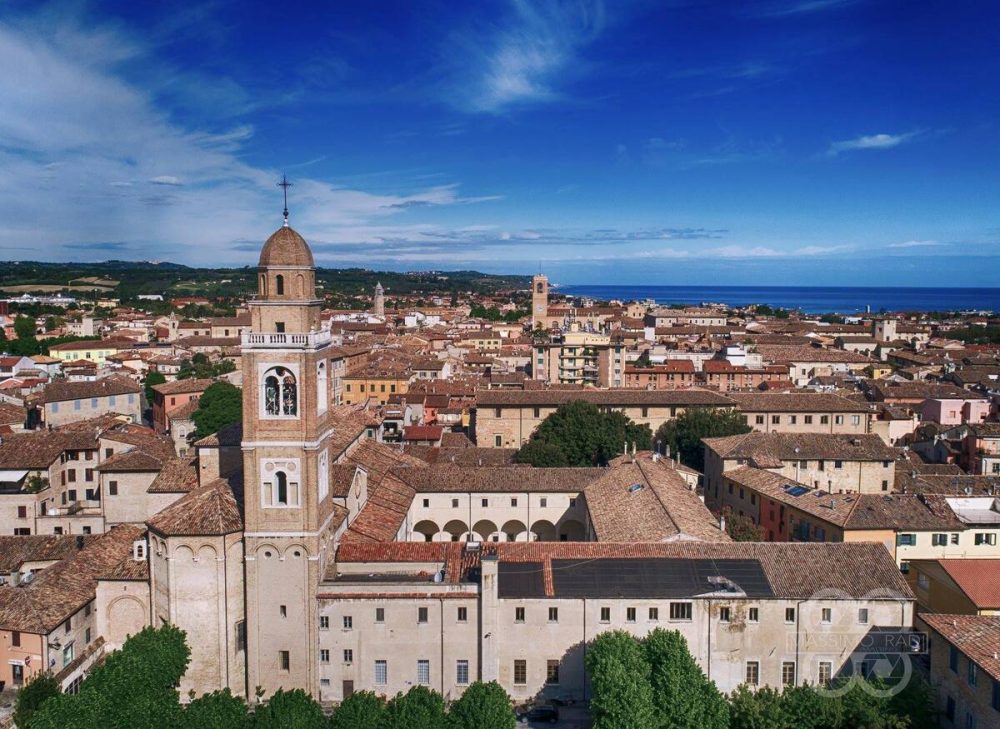
Fano
Famous for its Carnival, the oldest in Italy, Fano is a renowned tourist location in the north of the Marche region, with an important fishing port.
But Fano is also a splendid city of art, nestled between the hills and the Adriatic, proud of its long history. A city mindful of the ecological conservation of the environment – sea, hills, urban spaces – and for this reason it has received numerous awards. A city capable of welcoming and hosting.
With the Senones’ defeat in the battle of Sentinum (Sassoferrato) in 295 BC, the Roman colonization of the mid-Adriatic area began, together with the division of the lands among the veterans. Here, in the Protohistory, there was already a spontaneous aggregate at the confluence of the Metaurus and the Arzilla valleys. The year of Fano’s foundation is not known, unlike the nearby Sena Gallica (288 BC), Ariminum (268 BC) and Pisaurum (184 BC). But the first text where Fanum Fortunae appears can be dated to 49 BC. during the occupation of Caesar (Julius Caesar – De Bello Civili), whose name refers to the Temple of Fortuna, erected as a testimony of the Battle of the Metaurus when the Roman legions defeated the Carthaginian army. The culmination of the Roman presence occurred during the Augustan imperial period, when the emperor Caesar Augustus ordered to build of a settlement and defensive walls, elevating it to a colony (Colonia Iulia Fanestri).
60852
INHABITANTS
ITALY
COUNTRY
121
km²

Fano
In the historic centre, the most interesting attraction is the monumental Arch of Augustus, symbol of the city of Fano and gate of the ancient Via Flaminia; built at the intersection of the Via Flaminia and the decumanus maximus of the city, the monument is dated to 9 AD, thanks to the inscription on the frieze. Other sites worth visiting: the sixteenth-century Fountain of Fortune, the nineteenth-century Theatre of Fortune, the Malatesta Castle, bordered by curtain walls with robust corner towers and the Mastio, the Corte Malatestiana, seat of the Civic Museum and the Pinacoteca, the Cathedral, which preserves a pulpit and the Baroque Nolfi Chapel from the XVII century; the Church of Santa Maria Nuova, the Baroque Church of San Pietro in Valle, the Church of Sant’Agostino and the Tombs of the Malatesta, a true masterpiece of neo-Gothic art, housed under the portico of the Church of San Francesco. In the surrounding area, the characteristic hermitage of Monte Giove and the thermal area of Carignano are worth a visit.
Among the gastronomic specialties, there is the brodetto alla fanese, a typical dish of the Adriatic seafood cuisine. The Moretta fanese is a famous drink made with coffee, rum, anisette, and brandy, consumed by sailors and fishermen, who took spiked and hot drinks to warm up and reinvigorate themselves before raising anchor.
In addition to the Carnival, among the most important events that take place in Fano throughout the year there are the Antique Market Fair, which traditionally takes place on the second Saturday and Sunday of each month, The Fano Jazz by The Sea festival (July), Fano dei Cesari, historical re-enactment of Roman Fano (July) and the International Festival of Brodetto and Fish Soup (September).




Website: www.comune.fano.pu.it

